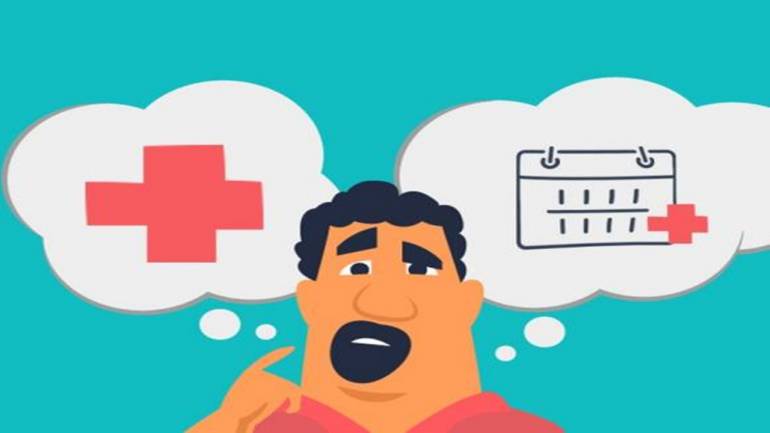Will this work in favour of customers? Industry voices weigh in on the debate
Your life insurer could soon double up as your health insurance provider too, if a committee set up by insurance regulator IRDAI votes in favour of this proposal. Will this work in favour of customers? Industry voices weigh in on the debate.
RM Vishakha, MD and CEO, IndiaFirst Life Insurance
Life insurance and health Insurance are both insurance contracts on a human life. Life Insurers already offer fixed health benefit products such as Critical Illness, Hospital Cash and Cancer cover. As the underlying risk remains the same, health insurance remains a logical growth path for a life insurance company. Being risk managers for a longer term, life insurers have a natural advantage to offer a better value proposition to meet the healthcare needs of their customers. Globally, this is one of primary reasons why the same insurer is responsible for both life and health insurance covers.
From a customer’s perspective, access to health insurance, coupled with savings-linked product structures, empowers life insurers to offer innovative health insurance products, which provide better choices to customers – e.g., utilising initial year savings to fund future health expenses. This will help strengthen customers’ proposition through combined insurance solutions for life and health.
Long-term health indemnity plans can enjoy the benefit of concurrent logistics of the pre-policy issuance process of life Insurance. This will result in lower underwriting costs and conjoint risk assessment. It will also provide an unprecedented comfort to the customer who gets to fulfil all her ‘life and health cover’ needs under one roof.
Therefore, life Insurers should be allowed to sell full indemnity-based health products.
Ashish Srivastava, MD and CEO, PNB Metlife Insurance
We have put forward our view through the Life Insurance Council, which is representing our view to the IRDAI. In fact, we were selling such policies earlier (till 2016). Given the low health insurance levels in the country, we can help in expanding the reach. Evidence suggests that many families go below the poverty line due to lack of funds for financing healthcare needs and medical emergencies. We have the distribution reach and can utilise it to serve the interest of customers. We have enough infrastructure available to quickly get this going. Many countries allow insurers to sell both life and health insurance policies. If replicated in India, this system has huge potential to be successful. We are very keen that this proposal fructifies as it will work well for customers.
Yashish Dahiya, CEO and Co-Founder, PolicybazaarLife insurers certainly have a deep understanding of the Indian customers and their needs. India is one of the least penetrated health insurance markets. This new proposal will help expand the scope even further, as life insurance companies have a strong foothold and established trust with Indian customers. Currently, life insurance companies understand the long-term pricing model better as they provide coverage in the form of pure term plans for the long term, i.e., at least 25-30 years. Now, as per the proposed regulations, life insurance companies may be allowed to come up with indemnity-based health plans, through which they will be able to bring in the same knowledge of long-term pricing to the table and further simplify the process for customers. Through the draft regulations, life insurers may be able to implement the actuarial models and review the price periodically, say, every five years or so, instead of doing it every year. This step will be greatly beneficial for the customers as it will increase several options for them to stay protected.
Supriya Rathi, Whole Time Director and Principal Officer, Anand Rathi Insurance Brokers
While both life insurance and health insurance companies cover for uncertainties, they are intrinsically very different. Claims in life insurance are straightforward, but in the case of health insurance, the claims are more frequent and more complicated and hence the operational requirements of the two vary significantly. On the one hand, life insurance companies have a large agency force that can also be utilised to distribute health products, which would increase penetration of health insurance in the country. However, we already have many health products on the indemnity side. Merely increasing the number of players by allowing life insurers to offer indemnity-based health policies might not add value. Instead, the focus needs to be on encouraging more innovation on covers, wellness benefits, better claims control and transparency in hospital charges across the country.
Anup Rau, MD & CEO, Future Generali India Insurance
Distributors and agents tend to specialise over time. Life insurers and distributors focus on long-term savings products, which are sold rather than bought. Term insurance, on the other hand, is bought but not sold – which is essentially the reason why term plans are so popular online. General insurance agents largely sell motor insurance, and the ones who sell non-motor insurance and health products tend to specialise in these product lines. Life Insurance distribution currently is geared towards selling long-term savings products, where service comes into play in case of a singular rare event of death. On the other hand, health insurance is service-intensive and requires a different kind of company eco-system, enhanced service architecture, culture, sales process and a different kind of ‘Agent and Customer’ needs analysis. While general Insurance companies have the ability to deliver on the customer promise, all life Insurance companies currently may not be able to. At present, general insurers are better-equipped to handle the entire health insurance ecosystem. Life insurers will have to make this transition at the earliest if they are to succeed in the long run.Subscribe to Moneycontrol Pro's Annual plan for Rs 399/- for the first year. Use coupon PRO2020 (Available on Web & Android only).














